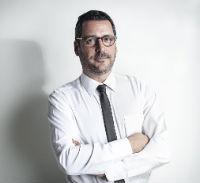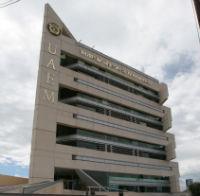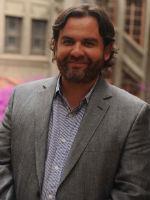 Those in charge of infrastructure management in Latin American universities are the pillars on which rests the responsibility of offering adequate facilities and always ready for the needs of students.
Those in charge of infrastructure management in Latin American universities are the pillars on which rests the responsibility of offering adequate facilities and always ready for the needs of students.
By Alejandra García Vélez
It is not strange to hear that university complexes resemble miniature cities in their structure and extension, the number of users they must receive day by day and the number of existing buildings to meet different types of needs make a high level of organization and coordination necessary for their proper functioning.
Therefore, BUILDING MANAGEMENT was given the task of interviewing 4 infrastructure managers from different universities in the region, who shared details of their day to day in charge of the management and maintenance of these facilities.
In addition, in an effort to recognize the important work carried out by professionals in this field, this edition of the journal also includes a Ranking with 30 of the universities in the region, selected according to the QS University Ranking: Latin America, and the name of their respective infrastructure or maintenance managers.
The QS University Ranking for Latin America has been prepared every year since 2011 by the British company Quacquarelli Symonds and seeks to highlight the 300 best universities in the region according to parameters that include academic reputation, reputation as employers, number of teachers / students, citations by articles, published research, staff with doctorates and web impact.
Building Management contacted the first 50 universities of the list prepared by Quacquarelli Symonds, finally selecting the 30 institutions open to share their information for the knowledge of the readers of the magazine. At the end of the article you will find the Ranking organized by country, emphasizing universities in Mexico and Colombia, the two nations with the most institutions in the list of QS with 45 and 41, respectively.
The voices of the protagonists
 Mauricio Londoño Vélez
Mauricio Londoño Vélez
Director of Logistics and Infrastructure Management
University of Antioquia (Colombia)
Built area: 318 thousand square meters in 22 headquarters and 108 buildings.
Mauricio Londoño has worked at the University of Antioquia since 2000, initially as head of the sustainability department and since August 2012 as Director of logistics and infrastructure. In this position, he has had the opportunity to be in charge of the strategic direction of the physical development of the institution, based on high quality programs and projects that have improved and modernized the facilities of each of the headquarters where the university has a presence.
The university has 22 campuses in different municipalities of the department of Antioquia, in addition to a headquarters in Bogotá. Its central campus in Medellín has 30 buildings, but in total, adding all the dependencies in the country, there are 108 buildings that all depend on the infrastructure management directorate.
Building Management: What is a day's work like in university infrastructure management?
Mauricio Londoño: The physical infrastructure management of the University of Antioquia has three very marked lines of work. On the one hand, the expansion of the headquarters and university buildings, on the other, the maintenance of the physical plant and thirdly, but not least, the conservation and restoration of the buildings considered as Assets of Cultural Interest of municipal or national scope, owned by the university. These three axes frame the work that is carried out daily from the Directorate of Logistics and Infrastructure Management.
Additionally, under my responsibility is the direction of the modernization of the infrastructure of the León XIII Clinic, in which the health services of the University IPS are provided.
The daily tasks consist of attending to the requests of the university community on the needs of adaptation or improvement of the physical facilities of its dependencies, in addition to strategically planning each of the projects that are conceived in the short, medium and long term. Weekly I schedule follow-up visits to each of the projects that the university carries out in the region.
The main difficulties that arise are the high demand for services and the few resources available to attend to them. However, through the design of framework maintenance contracts and operating services, such as cleaning and surveillance, among others, timely response is given to the requests of the existing physical plant.
GDE: What are the main aspects to take into account in the infrastructure management of a university?
ML: For a good planning and execution of infrastructure projects it is very important to have a program according to the most felt needs of the university community, that is, to project that the adaptations, reforms, restorations and new constructions obey the projection of the real demand for academic programs and institutional bets that seek the quality of the higher education service. On the other hand, the sources of funding will determine the scope and stages of intervention, even more so when it depends on resources external to the University.
Regarding the institutional presence in the different regions, the context in which an infrastructure project will be developed and the type of academic programs that will be offered must be determined, so that the infrastructure obeys the different variables, such as: region, geography, climate, demand for services, population, academic programs, market context, among others.
For infrastructure management, common interests, global solutions and concerted changes between the dependencies must be based on articulating projects by areas of knowledge and avoiding individual or isolated interventions from their context. Finally, the articulation between institutional plans and physical development plans will guarantee the strategic development of a public institution of higher education.
GDE: What are the main challenges and differences with other types of facilities?
ML: The physical infrastructure in a public university must ensure the good delivery of higher education services in an efficient and lasting manner. In this sense, the type of projects aimed at achieving the optimization of the physical plant must consider materials indigenous to each region and of lasting characteristics over time, since when executed with public resources, the responsibility of the investment will be evaluated by the entire university community over time.
The type of investment projects, whether maintenance or new construction, must contemplate the principles of public procurement, whose purpose is to guarantee a good management in the investment of resources. In this sense, the prior analysis of the need and convenience when executing a project is necessary to avoid early obsolescence of buildings or unscheduled changes of use.
The challenge is to contemplate from the designs a type of infrastructure that adapts to the conditions of the environment and changes in technology, including changes in the teaching methods of higher education.
The differences with other types of facilities are that educational spaces must transcend time and must allow the best provision of the education service. In addition, the educational infrastructure must allow for easy preventive and corrective maintenance programs, for which its facilities and the materials used must be easily replaceable without affecting the overall set.
GDE: What technological tools does the university have for the management of its infrastructure?
ML: To date, the University of Antioquia has several technological applications for infrastructure management, including an access control system in the institution's gates, door opening systems in some spaces, centralized ice water air conditioning system, lighting controls in buildings and on the university campus, optimization of groundwater by pumping, software in some faculties for programming spaces, among others.
This type of tool allows optimizing the use of infrastructure and the programming of academic spaces, which guarantees the normal functioning of the mission axes of the institution.
One way to keep the University of Antioquia updated on innovation and new technologies is from the referencing visits that are made annually to other universities in Europe and America, learn from their successful experiences and apply them in infrastructure projects.
 Manuel Becerril Colin
Manuel Becerril Colin
Director of University Works
Autonomous University of the State of Mexico
Built area: 1 million 659 thousand square meters of construction - 516 buildings
The Autonomous University of the State of Mexico (UAEMéx) has a total of 50 academic spaces between faculties, preparatory school, university centers, administrative spaces, among others. Among these, the campuses built in Toluca, with 261 thousand square meters; the Cerrillo campus with 117 thousand; as well as the Colon and Health Sciences Unit, with 174 thousand square meters.
In the period from 2005 to 2014, the physical university educational infrastructure was built, remodeled and expanded by 521 thousand square meters, representing 30% of the square meters of the UAEMéx. In addition, the University currently has more than 73 thousand students enrolled, an increase in the last 10 years of 50%, and seven thousand teachers, this number of users and sustained growth are undoubtedly a challenge for the management of the facility.
One of the key people in the management of the infrastructure of this educational center is the Engineer Manuel Becerril, director of work of UAEMéx.
Building Management: What is a day's work like in university infrastructure management?
Manuel Becerril: The management of infrastructure in the UAEMéx is based on a Participatory Strategic Planning, in which each and every one of the directors of the academic, research and dissemination of culture spaces intervene. From this close link, all the infrastructure and maintenance information that is required is collected and the document Annual Portfolio of Infrastructure and Maintenance Projects of the UAEMéx is formed, which entails an analysis of academic prioritization aimed at strengthening the quality academic programs that contribute to the accreditation of said programs.
The financial participation of the federal and state governments is of the utmost importance for the integration of the annual budget for work and maintenance, as well as the contribution of our institution's own resources.
Based on the definition and budgeting of these actions, the regulatory procedures for the award of works and services are applied, based on the publication of the amounts and ranges that allow establishing whether a work or action should be tendered, contested by restricted invitation or awarded directly.
GDE: What are the main aspects to take into account in the infrastructure management of a university?
MB: In the management of infrastructure, it is essential to achieve the strategic objectives of the institution in academic matters, research, dissemination of culture, extension and linkage. From the above, it is very important to highlight the impact that must be achieved so that the infrastructure contributes to offering quality educational programs with functional and adequate facilities in classrooms, laboratories, computer rooms, language rooms, libraries, workshops, cubicles for teachers, cafeterias, green and recreational areas, among others.
Another very important aspect is to achieve with the infrastructure greater spaces to increase the expansion of the educational offer and consequently provide greater opportunities for young people to access universities.
GDE: What are the main challenges and differences with other types of facilities?
MB: Dr. Jorge Olvera García, Rector of the UAEMéx, has expressed that although the quality of education is based on the relationship established by the student and the teacher, around learning objectives and contents, no less important is the link that both build with the elements of the school environment in which they operate, whether it is the physical or technological infrastructure or the plans and programs that guide students' school trajectories and teaching performance.
Thus, the university infrastructure is distinguished because it must contain facilities and equipment aimed at a diversity of specialized sectors and that have important differences among themselves according to the specific area of knowledge of each one; each bachelor's degree has its own academic program and therefore must have its own infrastructure and equipment design.
In general, educational facilities should be available aimed at providing knowledge for the benefit of all sectors of society. Each space designed and built must contribute to the transmission of knowledge, must be comfortable in space, light, ventilation and avoid adverse factors such as noise, for which, the proposal of materials and new technologies contributes to energy saving and care for the environment.
GDE: What technological tools does the university have for infrastructure management?
MB: The University has a directorate specialized in information technologies, which controls and manages the equipment for academic or administrative use and that is installed in all university spaces, for which pipelines, lines and physical infrastructure for the management of ICTs are built and maintained.
Likewise, there are specialized personnel who are responsible for designing and supporting various software programs that are produced in the university itself; An example of this has been the SIIA Comprehensive Administrative Information System, which is currently operating in its version number III and has had a long development process in the last 10 years.
The entrance to the university city is controlled through "Digital Accesses", which are arches or entrance doors with an electronic system that is only allowed to enter through a system of barcode readers.
Technology is undoubtedly a very valuable instrument that can help us solve such important problems as communication, learning, access to information, contributes to equity, security and the development of the university infrastructure itself.
 Juan Antonio Pavez
Juan Antonio Pavez
Director of Physical Space
Pontifical Catholic University of Valparaiso (PUCV)
Constructed area: 143 thousand square meters in 83 buildings
The Pontifical Catholic University of Valparaiso (PUCV) has offices in five cities in two regions of Chile. The person in charge of managing these spaces is Juan Antonio Pavez who for 12 years has been linked to the PUCV, first in positions of real estate management, then to the Directorate of physical space.
Prior to these responsibilities, he worked in urban planning and free exercise of the profession of architect. He is a graduate of the same university, with a specialization in Business Management (MBA) in the School of Commercial Engineering of the institution. Consultant in Peru and Chile in private and public institutions in the field of infrastructure.
Building Management: What is a day's work like in infrastructure management?
JP: In operational terms, internally the university divided the tasks associated with the infrastructure into two functional directions. On the one hand we have the Master Plan Directorate that depends on the Vice-Rectory of Development and which is responsible for planning, projects, new works, rehabilitation and remodeling.
On the other hand, there is the Directorate of Operations and Services that depends on the Vice-Rectory of Administration and Finance, which is responsible for the maintenance and equipment issue.
In my case, as Director of the Physical Space Master Plan Directorate of the PUCV, I am in charge of the planning, development, construction and supervision of the entire physical plant of the institution.
The division basically corresponds to the planning role of our office, versus that of contingency and service of the maintenance unit. In this way, our daily work runs in the development of architectural and engineering projects of specialties, attention to the needs of the university community in their initiatives with space needs, and the relationship with public and private organizations that are related to these tasks.
In a typical year, we developed approximately 80 to 100 minor and medium remodeling works (up to $150,000) and two major works (approximately $6 to $8 million each).
GDE: What are the main aspects to take into account in the infrastructure management of a university?
JP: The main aspect is the special and diverse relationship with a large multiplicity of internal "clients", given that we must meet the needs of a plant of 1,300 teachers, about thirty schools and institutes, 9 faculties, vice-rectories, 14 thousand students grouped in various student federations, etc. All the above with different objects of study.
Another aspect is the great extra-institutional pressure for resources, which in a country like Chile, which is in the midst of an educational reform of great proportions, requires greater competitiveness, control and management in financial resources, regardless of the private or public nature of the institution.
On the other hand, the infrastructure of a university, in many cases, becomes a "face" of the institution in the sense of marketing and attracting students, which requires us to maintain an adequate update and renovation in the facilities in line with the advance of the university market.
GDE: What are the main challenges and differences with other types of facilities?
JP: In a dynamic system such as higher education, infrastructure requirements and investment in equipment constitute a constant demand and pressure on the university. These requirements come mainly from two aspects; the evolution of the supply and demand of undergraduate careers, which determines enrollment and which is consolidating or accentuating in certain areas of knowledge, as well as the challenges in terms of research, technical assistance and postgraduate studies.
Both demands have a high degree of specialization and specificity, since it is common to have to develop physical space initiatives associated with very diverse lines of study and advanced research. As an example, it is very different, to manage, develop and maintain a pavilion of research laboratories in biochemistry to do the same in a pavilion of rooms for the career of literature.
GDE: What technological tools does the university have for infrastructure management?
JP: The university has a very powerful academic information system, developed internally, which allows obtaining and crossing data related to the variables that affect the planning of the infrastructure, in this way, the data collection is systematized, which results in greater efficiency and precision when contrasting needs and solving them.
Ricardo Leon Tamayo
Head of physical plant department
Eafit University (Colombia)
Built area: 75,000 square meters (main campus)
With 12 years as head of physical plant Ricardo Tamayo knows perfectly all the details behind the administration and maintenance of the infrastructure of one of the most recognized universities in the city of Medellín.
Building Management: What is a day's work like in infrastructure management?
Ricardo Tamayo: As a physical plant coordinator I am in charge of four areas basically. Those are: construction, security, remodeling and reforms, maintenance and cleaning, so one of my main activities during the working day is to constantly dialogue with the coordinators of each of these areas. With them he reviewed policies, plans, reports and resolved any doubts or situations that require my attention.
In addition, I am constantly reviewing progress in the projects we are developing, either advances in design, or supervision of works that are already in execution.
GDE: What are the main aspects to take into account in the infrastructure management of a university?
RT: There are so many different situations in each of the areas that it's hard to pinpoint a specific one. The issue of parking management, entry control of both pedestrians and vehicles, electronic security systems, the relationship with the maintenance provider, the care of the gardens, to name a few, are all situations that must be handled on a day-to-day basis.
It should also be mentioned that in general the whole process of designing and building new facilities is an aspect that requires much of my attention. For example, at the moment we have an important project which is the structural reinforcement of the university auditorium and the construction of a five-story building next door. We are also close to starting the construction of a new building to house the language school, in addition to other important projects in the process of being designed to complement the infrastructure of the institution.
We will also be renovating several old buildings to comply with current seismic resistant and fire prevention regulations.
GDE: What are the main challenges and differences with other types of facilities?
RT: The type of user would be the main differentiation, students are the raison d'être of a university, in addition to professors and visitors, so everything we design and build must be thinking to provide a better service to these users.
In addition to that, the schedules condition many of the activities that can be done. While in a corporate building employees leave at five or six in the afternoon allowing the cleaning and maintenance work to be carried out at times that do not affect the working day, in the university classes begin at six in the morning and end at 10 at night which modifies the way in which we must schedule this type of services.
The issue of noise management so as not to affect classes is a sensitive issue as well, as well as comfort.
GDE: What technological tools does the university have for infrastructure management?
RT: We mainly have access control systems, both in the external gates and in some internal dependencies that we consider critical, we also have more than 250 cameras in closed circuit television, alarm systems, lighting automation in all classrooms, automation in air conditioning systems, in addition to bobeo systems and also automated power plants.
The main advantage of having all these systems is to be able to maintain constant control over the installation and have information on all the operational details of it.











Leave your comment